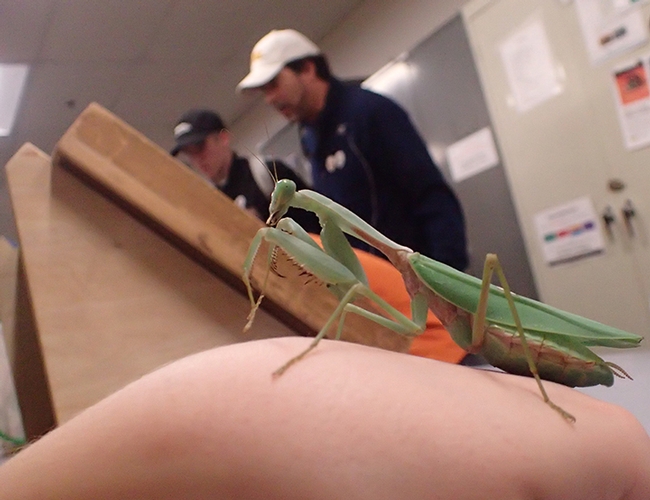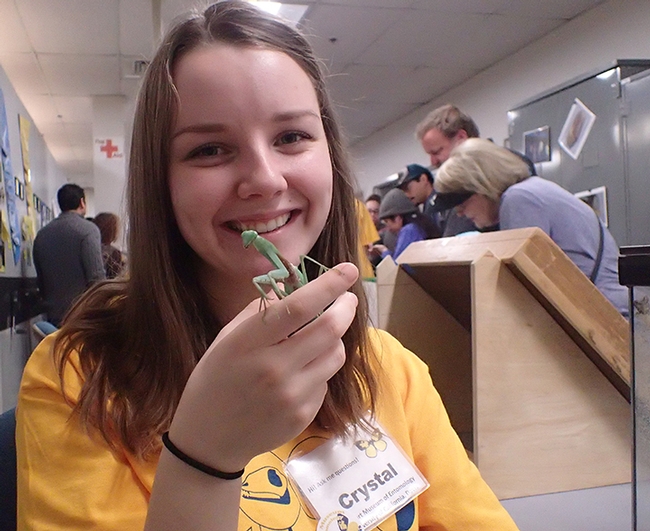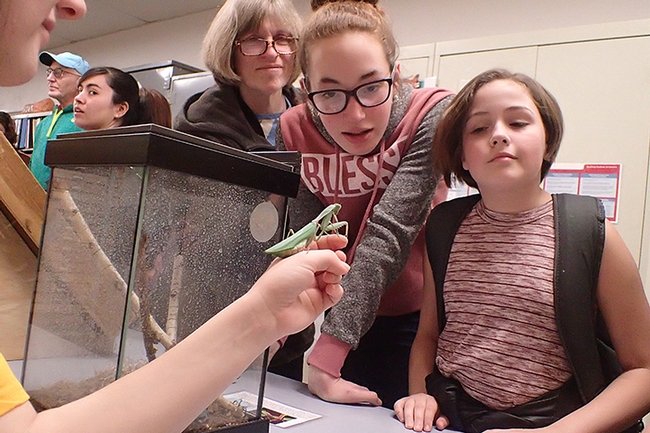- Author: Kathy Keatley Garvey
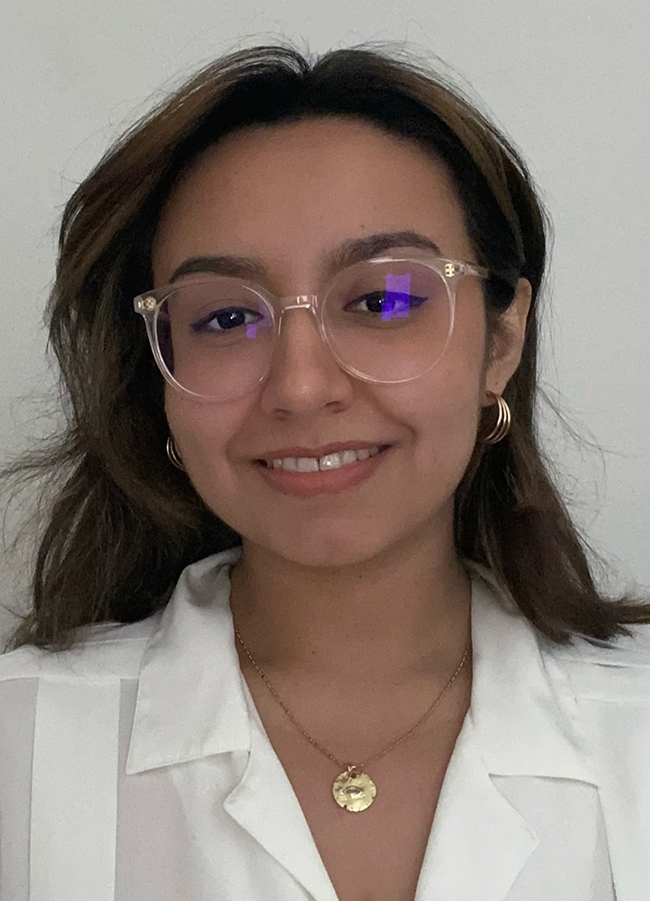
Bita Rostami, who received her bachelor's degree in animal biology (ABI) from the University of California, Davis, in June 2022, saw her practicum thesis published as a review article several months later in the journal, Methods in Ecology and Evolution.
"A key element in the ABI major, hosted by the UC Davis Department of Entomology and Nematology, is the practicum project--an opportunity for students to engage with research labs,” said her mentor, agricultural entomologist Christian Nansen, professor in the department.
The journal published her practicum report, “Application of Active Acoustic Transducers in Monitoring and Assessment of Terrestrial Ecosystem Health—A Review” in its Oct. 14th edition. “She pitched the basic and highly innovative idea of using active acoustic transducers in monitoring and assessments of terrestrial ecosystem health,” Nansen said.
“ABI practicum projects represent a unique opportunity for us instructors and lab team leaders to open our doors to students and allow them to challenge themselves and be inspired,” Nansen said. “And in some cases, it us that receive more from the student than what we offer--Bita is an example of such a student with an enormous academic potential.”
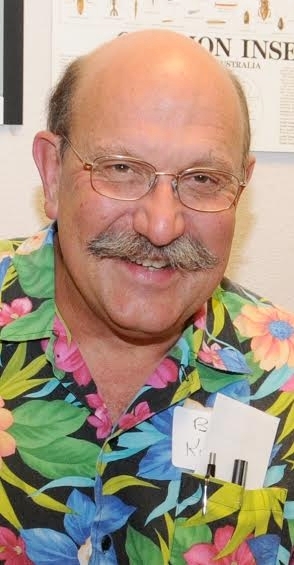
“Setting aside Bita's terrific academic background and qualifications, I have found her to be the ideal collaborator, very cooperative, consistently cheerful, perfectly dependable, stable and delightful to work with," Kimsey said. "Competition may or may not select for exceptional humans, but often selects for difficult characters. Bita almost uniquely combines high productivity and intense curiosity with a delightful personality, an ideal combination to have in a research program.”
In the journal article, Rostami reviewed and discussed possible applications—and also constraints—of active acoustic transducers in monitoring and assessment of terrestrial ecosystem health.
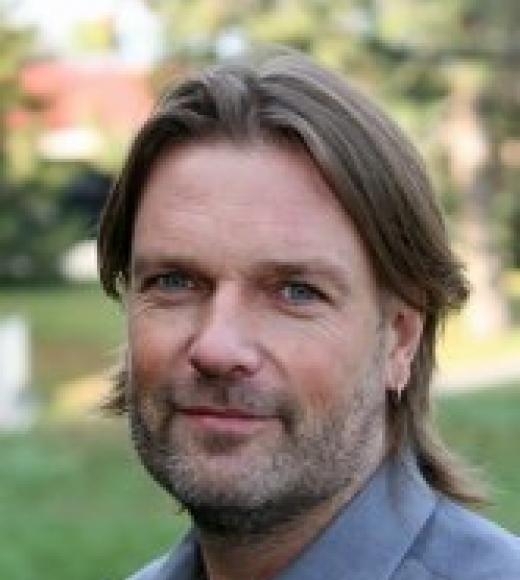
How did Bita Rostami conceive the idea of using acoustic transducers in monitoring and assessing terrestrial ecosystem health?
“I learned in one of my classes that playing recordings of healthy oceans could aid in restoring marine communities,” Rostami said. “From there, I wanted to find out if sound could be used similarly to help restore terrestrial ecosystems. Through my initial research, I found that although sound and sound recordings have been used to monitor and rehabilitate wildlife in terrestrial ecosystems, more research needs to be done on applying sound in assessing terrestrial plant health. I was familiar with multiple types of acoustic transducers commonly used in precision agriculture and urban forestry, so I wanted to see if we could apply pre-existing technology to perform monitoring and assessments on a broader scale in rough terrestrial terrains.”
One thing I really like about the ABI program at Davis is the wide range of research opportunities it offers students,” Rostami said. “You gain access to over 100 labs across campus and can choose to research anything from veterinary medicine to wildlife conservation. I wasn't interested in taking the pre-vet route when I applied to the program, but I could still choose classes that fit my interests and helped me design and execute my practicum.”
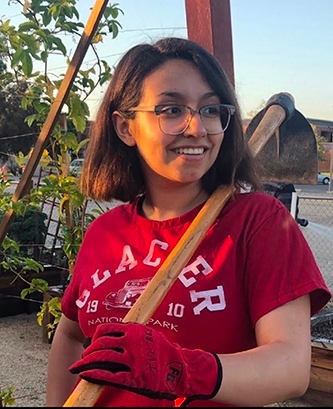
“That convinced me that this is what I want to do for the rest of my life,” she said. She then gained experience as an undergraduate research assistant with the UC Irvine School of Biological Sciences. Her work, with principal investigator Peter Bryant from January to May of 2020, involved researching and analyzing the diversity and life cycle of Pacific Ocean zooplanktons.
Next project: for several months in early 2021, she served as a researcher, advised by paleoecologist Renske Kirchholtes of UC Santa Cruz, in the California Ecology and Conservation (CEC), part of the University of California's Natural Reserve System (CNRS). “CEC is an undergrad field program that takes students from different UCs across multiple UC nature reserves to learn about Californian ecology and do research,” she explained.
Experience as a research assistant in the UC Davis laboratory of conservation ecologist Susan Harrison in the Donald and Sylvia McLaughlin Natural Reserve, a 7,050-acre CNRS reserve in Napa and Lake counties followed. Working with primary investigator Rebecca Nelson from March 2021 to February 2022, she conducted daily visual encounter surveys of field sites or pollinator species, maintained daily data entry (time/date, weather, GPS coordinates, pollinator species, number of visitations and lower species visited), and collected soil samples from study sites to measure chemical makeup. She also collected seeds from specific flower species to analyze genetic diversity and test for seed viability.
Rostami, now 23 and a resident of Newport Beach, is taking an academic break before applying for graduate school. She is working full-time teaching math and biology as a private academic tutor in grades K-12. “I plan to eventually apply for an environmental science master's program and get certified through the Society of American Foresters.”
Rostami, who speaks Farsi (Persian), English and Spanish, already has accomplished two “firsts” in her family: She is the first to attend college in the United States “since we immigrated here from Iran around ten years ago. Most of my family are engineers, so I'm also the first one going into environmental studies.”
Well done!
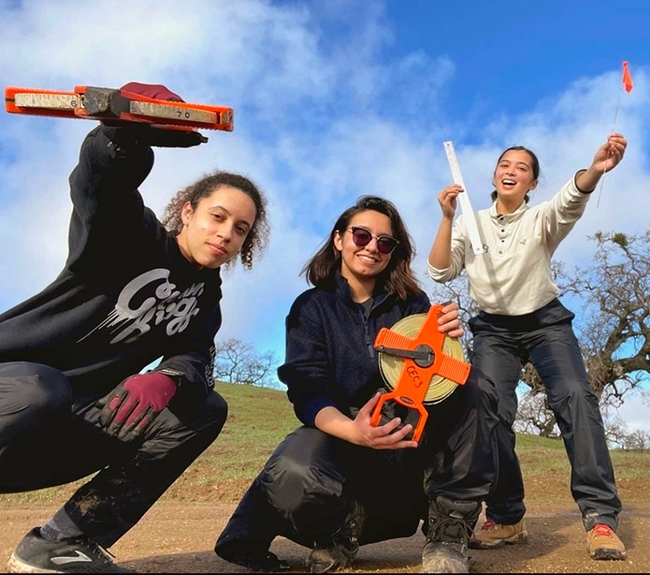
- Author: Kathy Keatley Garvey
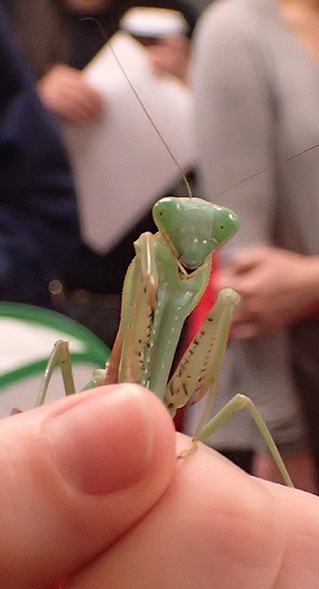
Not UC Davis animal biology major Crystal Homicz, treasurer of the UC Davis Entomology Club.
"Cupcake" is the name of her six-month-old praying mantis that she exhibited at the Bohart Museum of Entomology last Saturday during the seventh annual Biodiversity Museum Day.
The adult mantis is a Rhombodera megaera, native to southern China and Thailand, Homicz told the crowd.
The species is one of the largest mantises in the world; it can reach 4 to 5 inches in length. However, Cupcake is not that large.
Homicz, a student researcher in Steve Seybold's forest entomology lab, also has the male of this species and hopes to mate it this week. "I've been feeding her lots of flies so I hope the male doesn't lose his head," she said, referring to sexual cannibalism that can occur.
A females can lay about three oothecae (egg cases) in her lifetime. Between 150 to 250 nymphs can hatch from an "ooth."
The Biodiversity Museum Day, featuring 13 collections or museums on campus, drew thousands of visitors exploring the diversity of life, said chair Tabatha Yang, education and outreach coordinator for the Bohart Museum of Entomology. Seven were open from 9 a.m. to 1 p.m.: Museum of Wildlife and Fish Biology; Bohart Museum of Entomology, Raptor Center, Paleontology Collection, Arboretum and Public Garden; Phaff Yeast Culture Collection; and the Viticulture and Enology Culture Collection. Six were from noon to 4 p.m.: Nematode Collection, Botanical Conservatory, Center for Plant Diversity Herbarium, Anthropology Museum, Häagen-Dazs Honey Bee Haven and the Design Museum.
Plans are already underway for the eighth annual Biodiversity Museum Day. The next major campus event is the 104th annual UC Davis Picnic Day, set April 21.
